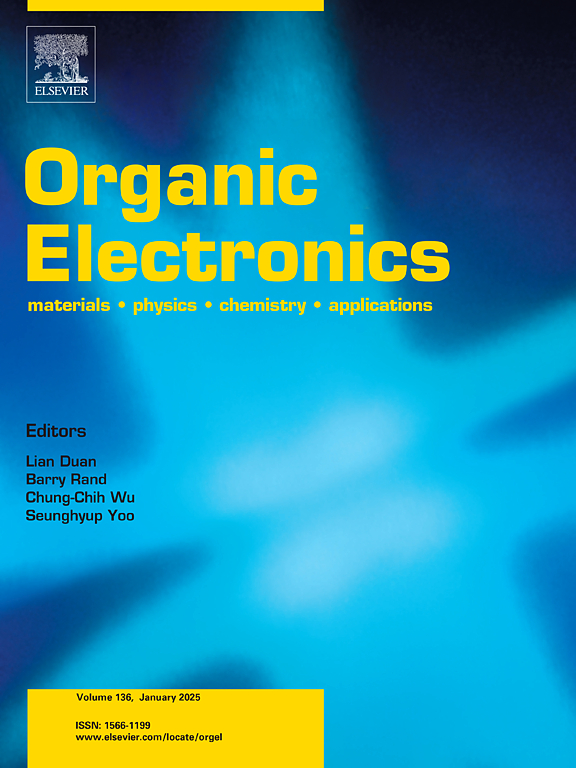Luminescence properties and mechanism studies of thermally activated delayed fluorescence molecules
IF 2.6
4区 工程技术
Q3 MATERIALS SCIENCE, MULTIDISCIPLINARY
引用次数: 0
Abstract
Thermally activated delayed fluorescence (TADF) has gained significant attention as a key mechanism in developing highly efficient organic light-emitting diodes (OLEDs). This review consolidates recent advancements in the theoretical exploration of TADF mechanisms, emphasizing the intricate donor-acceptor (D-A) interactions, the influence of various donor groups on the optical properties, and the behavior of luminescence across different phases. Employing a multiscale simulation, which encompasses density functional theory (DFT) and time-dependent DFT (TD-DFT), this paper elucidates the electroluminescence mechanisms of TADF molecules in both amorphous and crystalline states. The study highlights the significant impact of solid-state interactions on the luminescent properties of TADF materials, offering a comprehensive understanding of the structure-property relationships. These theoretical insights provide a robust foundation for designing next-generation TADF materials with optimized performance, addressing the existing challenges in achieving efficient blue and red light emitters for practical applications in OLED technology. Through this review, we aim to present a coherent overview of the current state of TADF research, identify the critical factors influencing luminescence, and propose strategic directions for future research to further enhance the efficacy and applicability of TADF-based OLEDs.

热激活延迟荧光分子的发光特性及机理研究
热激活延迟荧光(TADF)作为开发高效有机发光二极管(oled)的关键机制受到了广泛关注。本文综述了TADF机制理论研究的最新进展,强调了复杂的供体-受体(D-A)相互作用,各种供体基团对光学性质的影响,以及不同相的发光行为。采用密度泛函理论(DFT)和时间相关DFT (TD-DFT)的多尺度模拟,阐明了TADF分子在无定形和晶体状态下的电致发光机理。该研究强调了固态相互作用对TADF材料发光性能的重要影响,提供了对结构-性能关系的全面理解。这些理论见解为设计具有优化性能的下一代TADF材料提供了坚实的基础,解决了在OLED技术实际应用中实现高效蓝光和红光发射器的现有挑战。通过这篇综述,我们旨在对TADF的研究现状进行一个连贯的概述,找出影响发光的关键因素,并提出未来研究的战略方向,以进一步提高基于TADF的oled的功效和适用性。
本文章由计算机程序翻译,如有差异,请以英文原文为准。
求助全文
约1分钟内获得全文
求助全文
来源期刊

Organic Electronics
工程技术-材料科学:综合
CiteScore
6.60
自引率
6.20%
发文量
238
审稿时长
44 days
期刊介绍:
Organic Electronics is a journal whose primary interdisciplinary focus is on materials and phenomena related to organic devices such as light emitting diodes, thin film transistors, photovoltaic cells, sensors, memories, etc.
Papers suitable for publication in this journal cover such topics as photoconductive and electronic properties of organic materials, thin film structures and characterization in the context of organic devices, charge and exciton transport, organic electronic and optoelectronic devices.
 求助内容:
求助内容: 应助结果提醒方式:
应助结果提醒方式:


